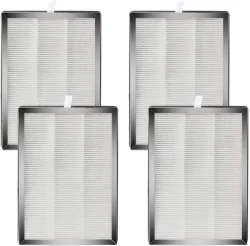Here are key aspects of activated carbon filters
2023-12-11
Activated carbon filters, also known as activated charcoal filters, are widely used for air and water purification due to their ability to adsorb impurities and contaminants. The term "activated" refers to the process of activating the carbon, which increases its surface area and makes it highly effective for adsorption. Here are key aspects of activated carbon filters:
1. Composition:
- Activated carbon filters are made from activated carbon, which is a form of carbon processed to have small, low-volume pores. The activation process involves heating carbonaceous materials, such as coconut shells, wood, or coal, with steam or chemicals to create a highly porous structure.
2. Adsorption:
- The main mechanism of action for activated carbon filters is adsorption, not absorption. Adsorption involves the adherence of molecules to the surface of the activated carbon. This process is highly effective for removing a wide range of impurities, including gases, odors, and organic chemicals.
3. Surface Area:
- The activation process significantly increases the surface area of the carbon, creating a vast number of pores and a high level of microporosity. This enhanced surface area allows activated carbon to adsorb a large volume of contaminants.
4. Applications:
- Activated carbon filters are used in various applications, including air purification, water treatment, gas masks, and industrial processes. They are commonly found in household water purifiers, air purifiers, and even in the filtration systems of fish tanks.
5. Air Purification:
- In air purification systems, activated carbon filters are used to remove odors, volatile organic compounds (VOCs), and other gaseous pollutants. They are often combined with HEPA filters in air purifiers to provide comprehensive filtration.
6. Water Treatment:
- Activated carbon filters are widely used in water treatment to remove impurities, taste, and odor. They can adsorb chlorine, sediment, organic compounds, and certain chemicals, improving the taste and quality of drinking water.
7. Chemical Filtration:
- Activated carbon filters are employed in various industrial processes for chemical filtration. They can be used to purify gases, remove contaminants from liquids, and recover valuable chemicals.
8. Medical Applications:
- Activated carbon is used in medical applications, such as in certain types of dressings for wound care, where its adsorptive properties help manage odor and reduce infection.
9. Reactivation and Regeneration:
- Over time, activated carbon filters can become saturated with adsorbed contaminants. Some types of activated carbon can be reactivated or regenerated through heating, allowing them to be used multiple times.
10. Limitations:
- While activated carbon filters are highly effective for certain types of impurities, they may not be as efficient in removing all contaminants. For example, they may not effectively filter out heavy metals or certain bacteria and viruses.
11. Particle Size:
- The size of particles that activated carbon can effectively remove depends on the pore size distribution of the specific activated carbon used. Larger particles may not be effectively adsorbed.
Activated carbon filters play a crucial role in improving air and water quality by removing a wide range of contaminants. The effectiveness of these filters depends on factors such as the type of activated carbon used, contact time, and the specific impurities being targeted. Regular replacement or regeneration is essential to maintain their effectiveness over time.



